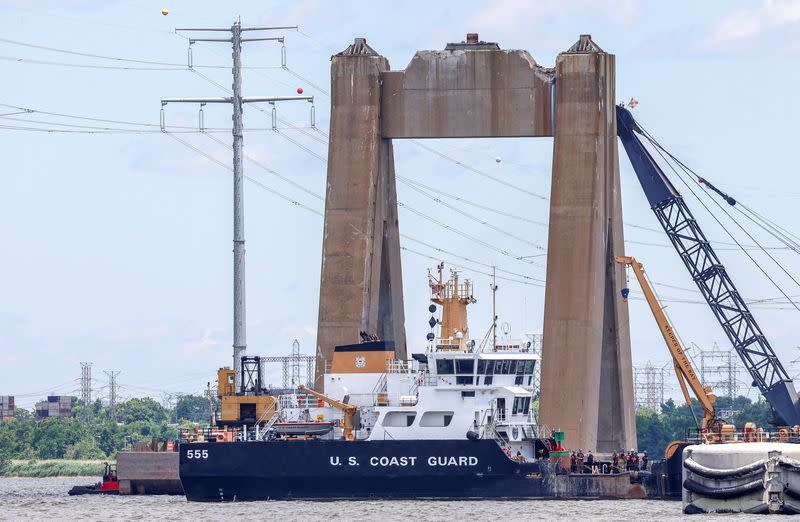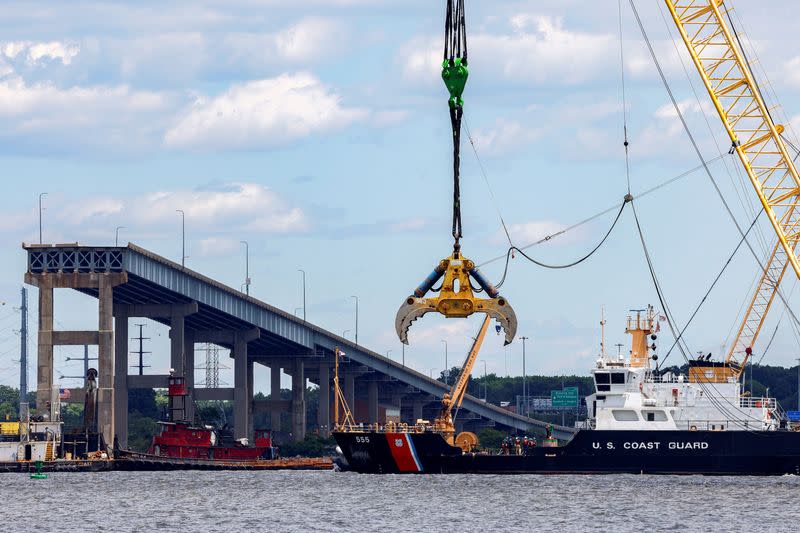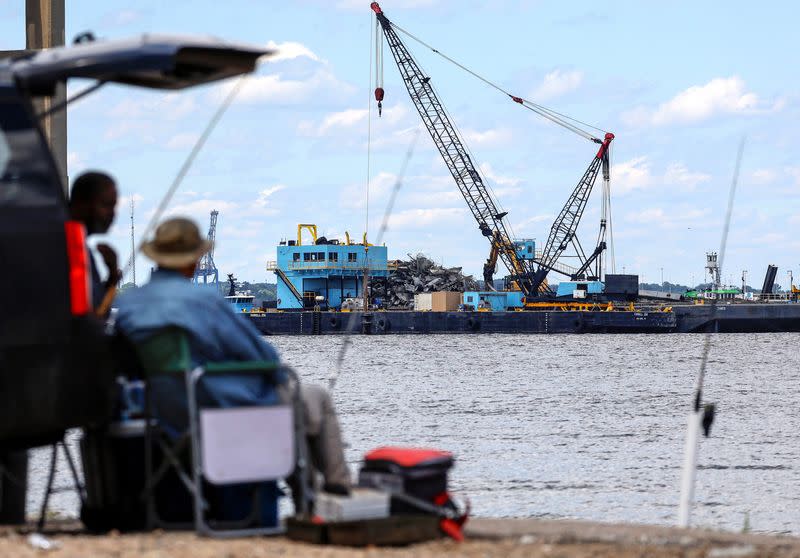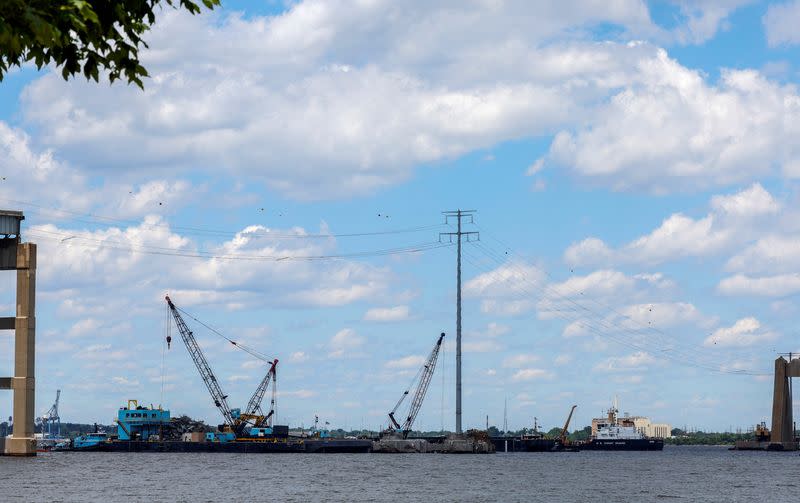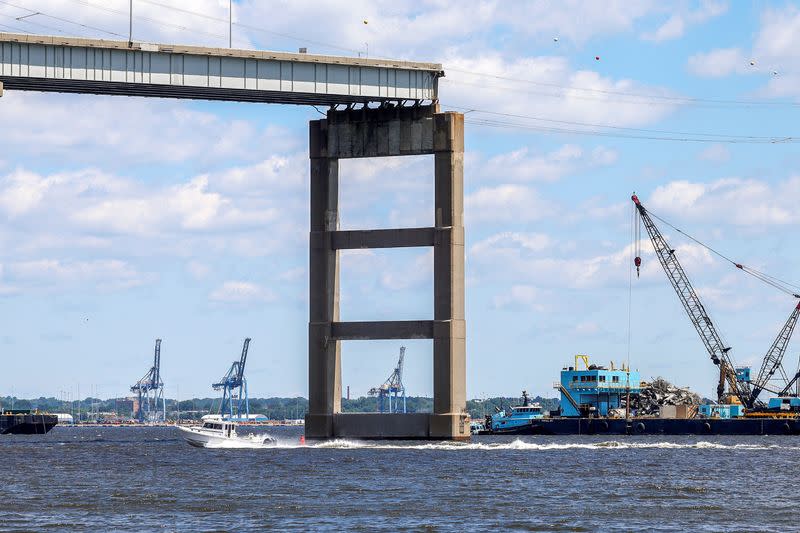Baltimore Port key channel reopens following bridge collapse
By David Shepardson
WASHINGTON (Reuters) -Federal agencies said on Monday they have restored full access for commercial maritime transit through the Port of Baltimore after the removal of 50,000 tons of debris from the March 26 collapse of the Key Bridge.
The cargo ship Dali crashed into the Francis Scott Key Bridge in March in Baltimore, killing six people and paralyzing a major transportation artery for the U.S. Northeast. The U.S. Army Corps of Engineers said a survey on Monday certified the riverbed as safe for transit and said the Fort McHenry Federal Channel had been restored to its original operational dimensions of 700 feet wide and 50 feet deep.
The fully operational channel will allow two-way traffic and the ending of the additional safety requirements that were required because of temporary reduced channel width.
The U.S. Army Corps and U.S. Navy Supervisor of Salvage and Diving worked to clear Key Bridge wreckage for more than two months before the final piece was removed last week. The Dali was safely moved on May 20.
More than 1,500 individual responders along with 500 specialists from around the world operated a fleet of boats during the operation which involved 56 federal, state, and local agencies.
Surveying and removal of steel at and below the 50-foot mud-line will continue to ensure future dredging operations are not impacted and wreckage will continue to be transported to Sparrows Point for follow-on processing.
In April, the FBI opened a criminal probe into the collapse. The National Transportation Safety Board said last month the Dali lost electrical power several times before it crashed into the bridge including experiencing a blackout during in-port maintenance and shortly before the crash.Maryland estimates it will cost $1.7 billion to $1.9 billion to rebuild the bridge and anticipates completion by fall 2028.
(Reporting by David Shepardson; Editing by Leslie Adler and Lincoln Feast.)

